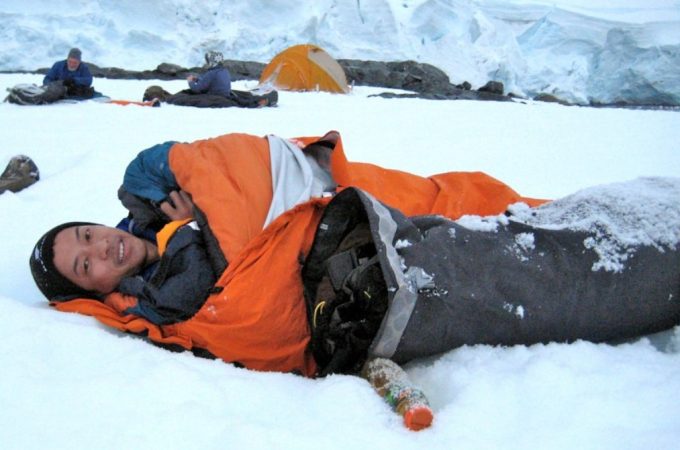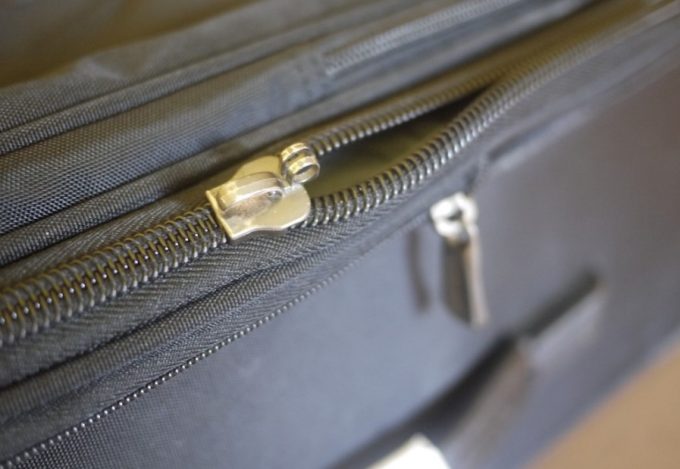How to Fold a Tent: Tips on Packing Away and Caring for Your Tent
There are a variety of wilderness and outdoor skills that fairly basic and are must-haves. You can consider, basic navigation, sourcing food, securing water are among these.
On top of the skills just mentioned, knowing how to fold a tent ranks pretty high on basic skills that you need to have/develop if you’re someone who enjoys the outdoors or if you want to be ready for emergencies.
Now, there are numerous types of tents, and the ways to properly pack them away will vary depending on a variety of factors. But the gist of it is, that it’s a skill that’s easy to pick up and one that’s very important.
Tents vs other forms of shelter
Tents are generally the go-to form of shelter in the outdoors. Sure it isn’t the most space-saving one and neither is it the easiest to set up and take apart. But tents arguably provide the best overall package. They provide a high level of shelter against the elements short of an RV or a cabin while out in the wilderness.
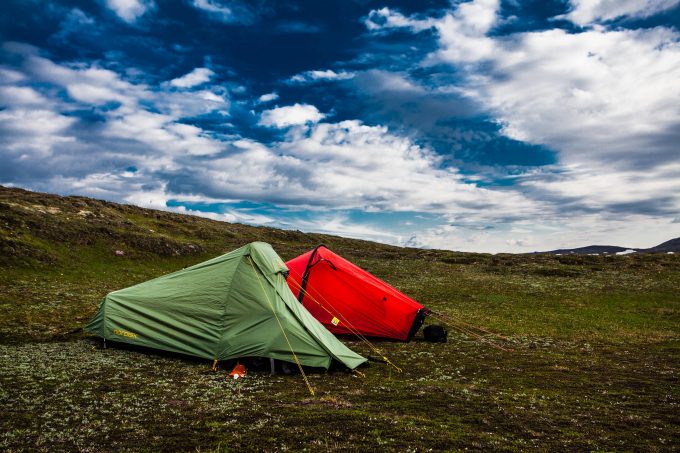
These will also usually have enough space to accommodate gear in addition to people who will be staying inside. Other common options such as lean-tos, tarps, bivys and floor shelters all have their pros and cons as well. But tents are still the definite go-to option. Here is a brief list of other common types of shelter commonly used by campers.
Lean to
The lean to is very simple. By definition, it’s a temporary structure that makes use of another existing structure as a support pillar. It’s very popular with minimalists and survivalists as you can make one out in the woods with little or no additional items not found in the wilderness.
All you need is an existing base of support which can be a rock or tree, then a roof material which can be a tarp or locally secured foliage. At times you will need a minor frame which can be built with wood from nearby trees.

Survivalists like it because it can be built without much in the way of materials. In terms of the quality of shelter, however, results will vary with the materials you have at your disposal and your skill at putting one together. Also, it will take quite some time to build a proper one. Also, you’re on natural flooring so rain will, more often than not, get you wet.
Tarp
Tarp-based shelters are very easy to set up. Like the lean to, all that’s needed is a base of support like a tree, then with rope, you can easily secure the tarp to these bases and now you have a roof. Check out our tips and tricks on tarp camping to guide you on your next adventure.
This is great for hot days or light rains. However, the absence of walls and flooring make you susceptible to getting wet during moderate to heavy rains.
Water Proof Bivys
These are essentially fortified sleeping bags that have a waterproof layer that you can use to protect you from the elements. This is pretty straightforward and does have its merits. You can set it up nearly everywhere and it takes little effort to get ready and pack up. However, you aren’t looking at a lot of space while inside.
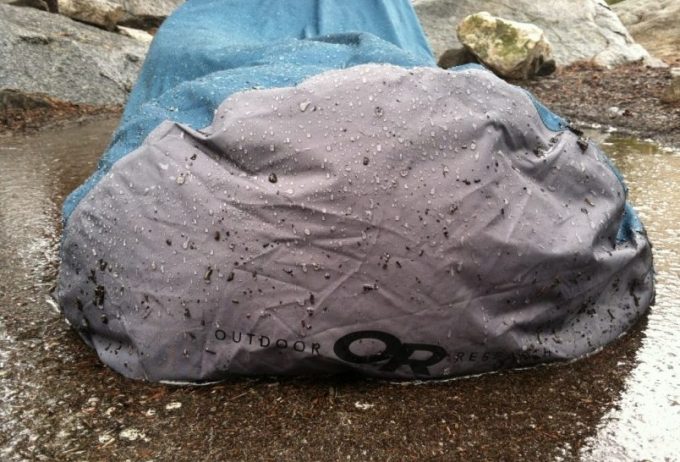
Not a good option if you have a bit of claustrophobia. Also, your pack’s probably going to be sitting outside, exposed. Then there’s the difficulty of getting in and out while it’s raining. You won’t be able to do so without getting the insides wet if it’s raining. Getting to sleep, being dry becomes very difficult under these circumstances.
One of the disadvantages of a tent versus these other types of shelter is the setup and disassembly time that it’ll take to use it and tents are generally more cumbersome than other types of shelters. Despite these things, however, tents are still the choice shelter for a lot of people going up against difficult terrain and harsh/unpredictable weather conditions.
Why is learning to fold a tent important?
Tents are an investment
A tent that’s of a decent quality will set you back upwards of $100. Having it last as long as possible should be a pretty big priority for any camper. One of the ways to do this is to be sure that you pack away your tent properly.

Long hikes and extended use can prove to be strenuous not only for you but for your gear as well. If you don’t take care when you pack that tent up, then you increase the risk of damaging it much sooner.
Speed takes practice
One of the reasons why some outdoorsmen shy away from using tents is the hassle of setting one up and taking it down. In order to mitigate the concerns of time and effort, it’s important to learn and practice how to set one up and pack it away. After a long day worth of hiking, you will want to be able to set up camp quickly.
Also, when setting out in the morning, you will want to be ready to go as quickly as possible. When you’re aware of the best way to do it, practice several times over prior to moving out, this allows you to do things faster when time becomes a concern. It will still take time, but it will be much less than if you don’t practice the process.
Space Maximization
Knowing the best way to pack away your tent means that you’ve probably got it at its smallest possible size too. Though this will not have any effect on weight, you will want your tent to be as compact as it can be.

You don’t want anything excessively bulky encumbering you as you go along your hike. If your folded up tent is strapped onto your pack, you don’t want it scraping on things as you go about.
The Best Way to pack a tent?
It’s an age-old debate. You’ve got experienced hikers and campers with different opinions on this. How to pack away a tent? To fold, roll, or stuff? Probably the long and short answer is there is no single best way to put away your tent. It will be a case to case basis when it comes to putting your outdoor shelter away.
Folding and Rolling
A lot of people are of the opinion that this is the best way to store your tent. By properly folding and rolling up your tent, you can manage to get it to as small a size as possible for you to store it away. This is especially useful if you’re using a pretty cramped bag for your tent, or if you’re really intent on saving up space in your pack.
Stuffing
For some people, this just seems lazy, however, there are pretty decent arguments for stuffing a tent down a sack. For one thing, this is way faster than going through the motions of properly folding and rolling down your tent.

Secondly, if you’re pressed for time, and need to get your tent stored and move ASAP (like if it’s starting to rain) you will wan to go with stuffing. Another reason that some people advise stuffing, is that folding and rolling a tent the same way all the time, can create permanent creases.
This weakens the various properties of the tent fabric and can potentially cause damage in locations that regularly experience pressure/friction.
Packing up a Tent
General Instructions
Here’s a basic run through of how you can take down your tent. This won’t be too thorough, if you were able to put it up, you should know how it works by now.
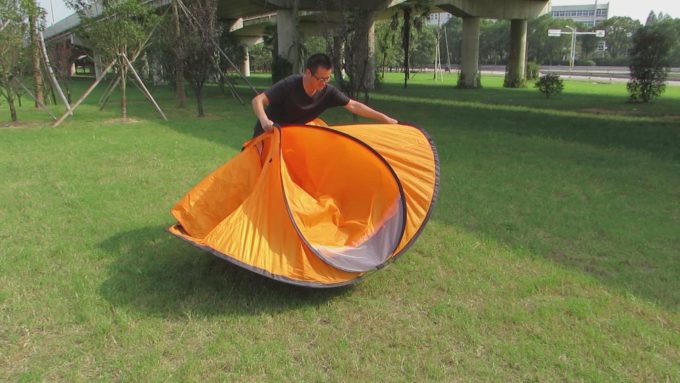
This is for the usual tents not the pop-up/instant variety
- Take out the inners one at a time. Fold them separately.
- Unpeg the guys. You will want to be sure to keep them all in one place for quick and easy storage later on.
- If you have any pegs that are stuck in the ground, pry them out with other pegs. This shouldn’t be too difficult. Loosen the ground around the stuck peg if it becomes a bit tough to pull out.
- Roll up the guy ropes. Do this nice and tight. You aren’t dealing with the wires of your gadgets. A tight roll isn’t going to do any harm.
- Unzip your door. This is to allow air to escape from the tent. You don’t want any air in there as that’ll take space.
- Collapse your tent. But while doing this keep the poles in there.
- Start taking out the poles that are upright. Be sure to remove the small pins and places them at the base of your tent.
- Start taking off the poles that secure your roof. You can loosen them a bit by shaking. Wipe them off if they’re a bit dirty.
- Straighten out the bulk of the tent’s fabric. Fold it into 1/3s.
- Flatten out your tents and slowly push or sweep out the remaining air.
- Grab the tent’s bag and check if the tents folded dimensions will roughly match the bag.
- Place the door portion of your tent and hang it casually over the bag’s opening. Now, starting from the other end, roll in from the closed end.
- As you roll the tent, be sure to apply pressure in order to create tension. Putting your weight on it, via your knees is a good option. You want the tent as compact as possible. If you don’t think that you managed to get the tent tight enough, you can re do it.
- Once you’ve managed to get the tent into the bag, zip it up. Zip up the bag nice and tight.
- Be sure to check that the material doesn’t snag the zipper. That’ll be a hassle later on.
- Store the poles, pegs and ropes in their separate bags.
Now if you’re in a definite hurry, or if you don’t believe in rolling up your tent, you can stuff your tent into the bag. Provided, that the bag is big enough for you to stuff the tent in.
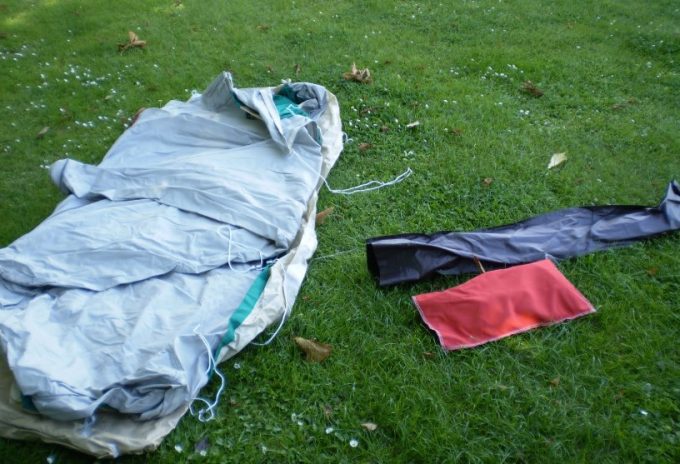
Being methodical in packing up your tent (as is the case with luggage) allows you to get it to a smaller size than with directly stuffing. It is possible to muscle it in, but it might take some doing.
For Quick-Folding/Pop-up Tents
- Take out any pegs you may have used. And set them into their container/bag.
- Open the door. Take the two top-most poles and gently fold down the center. After this, take the bottom poles and do the same. Gently let air out through the door if there are air packets.
- Fold it in a manner that it is shaped like a tortilla. At this point, it should roughly fit tha bag.
- Slide the tent back into its bag.
Packing a tent in the rain
Here’s a scenario you’re probably going to encounter at one point or another. And quite frankly, it’s very likely if you like to camp out in tropical environments. If you were able to set up a tarp over your tent (good for you) then you shouldn’t have too much trouble. Just stay within the shelter of the tarp and pack up the tent.
See also: Best Family Tents: How to Pick a Tent and Not Regret
Sadly, however, chances are you don’t have the luxury of a tarp (a lot of folks won’t bother with one when they have the other). Under these circumstances, you’re probably going to want to stuff your tent. Again, this is assuming that the bag is large enough and that you’ve stuffed your tent before.
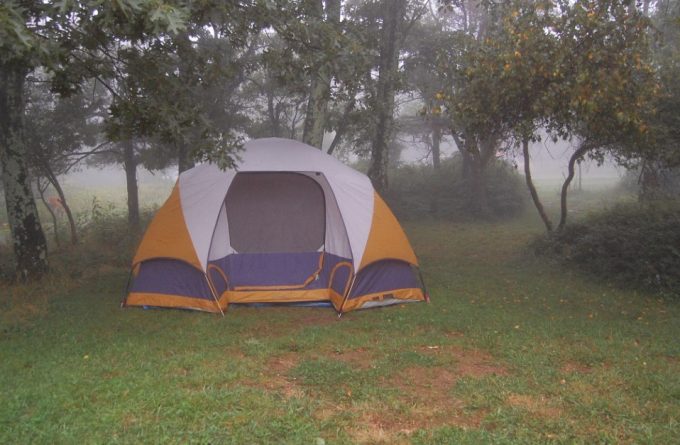
When it’s raining you want to be able to move out as quickly as possible (if at you’re going to be moving at all, anyway). Stuffing a tent allows you to bypass a lot of the processes listed above. Just be sure that you’ve tried stuffing your tent before. Otherwise, you might be in for a longer time in the rain, than if you’d just gone through the motions of folding and rolling.
Tent Care tips
Your tent in some ways is going to be your home away from home. With that in mind, you’re going to want to keep it in good condition for as long as you possibly can. With that in mind, here are a few things you can do to care for your tent to improve its lifespan.
Read the instructions
This may come across as pretty basic. But at times, it’s a very simple, yet overlooked way of caring for our belongings. Manufacturers will always include important things to note with regard to caring for whatever it is you bought. They built it, they definitely know how to care for it. Fail to do so, and you run the risk of early, unnecessary damage.
Be gentle in handling poles and zippers
These are easily the earliest parts of the tent that get damaged and cause damage. When you are too aggressive with the zipper, you run the risk of catching tent fabric as you try to hurriedly close it.
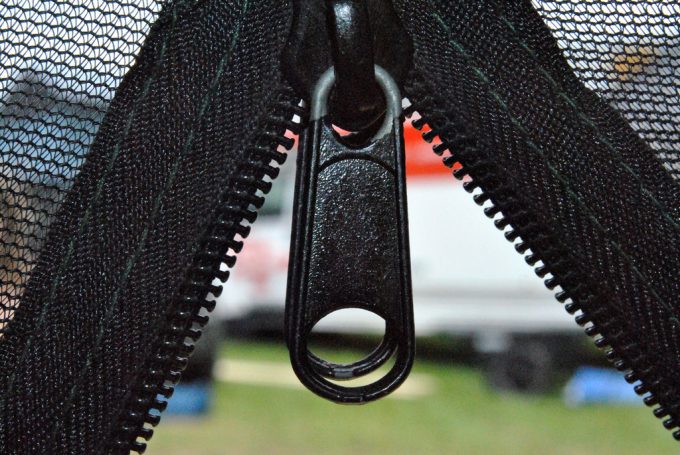
When you try to open too quickly, it causes abrasion on the fabric and if you’re too rough, you run the risk of damaging the poles too. When you’re about to store these, apply lubricant to the pole’s ends and zippers. This will help lengthen the lifespan of these items and by extension, your tent too.
Never Store a Wet Tent
If you’re out and you have to pack up while the tent is wet, that’s no problem. Quite frankly, that’s a normal occurrence. However, if you’re going to set the tent aside for long-term storage once you’ve gotten home, you’d better make sure you clean it out.
Be sure that it isn’t wet. The easiest reasoning for this is that if you store a wet tent, it’ll develop a smell and probably mildew the next time you take it out. Second, is that leaving moisture on a tent’s fabric can jumpstart the process of hydrolysis. That is the breakdown of the tent’s waterproof polyurethane coating.
Do Manual Cleaning
Putting a tent into a washing machine is a sure fire way to get your tent torn up. The fabric of the tent isn’t made to withstand the brutality of a washing machine and much less a dryer. Clean out your tent in a yard with soap and water.
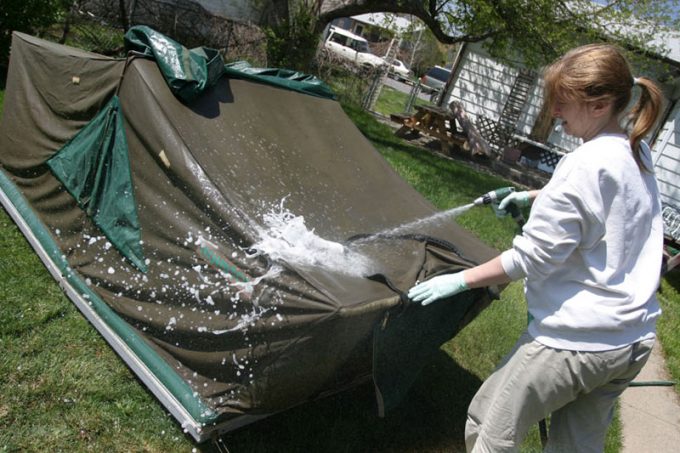
Use an old toothbrush or non-abrasive sponge to gently weaken the dirt that has hardened on your tent. In the event that stains require the use of enzyme cleaners, you will want to keep an eye on it. Leaving a tent submerged in cleaning detergent can cause a degradation of the quality of your tent’s waterproof coating.
In Conclusion
These are only some of the things you should keep in mind when it comes to packing away, storing, and caring for your tent. At the end of the day, being sure that a tent is ready for future use is your responsibility. It doesn’t have to be a very tiring process. It’s a time investment of roughly, just half a day. So why not do it?
To help you in choosing the best backpacking tent, check out our reviews of the top ones to give you more choices.


